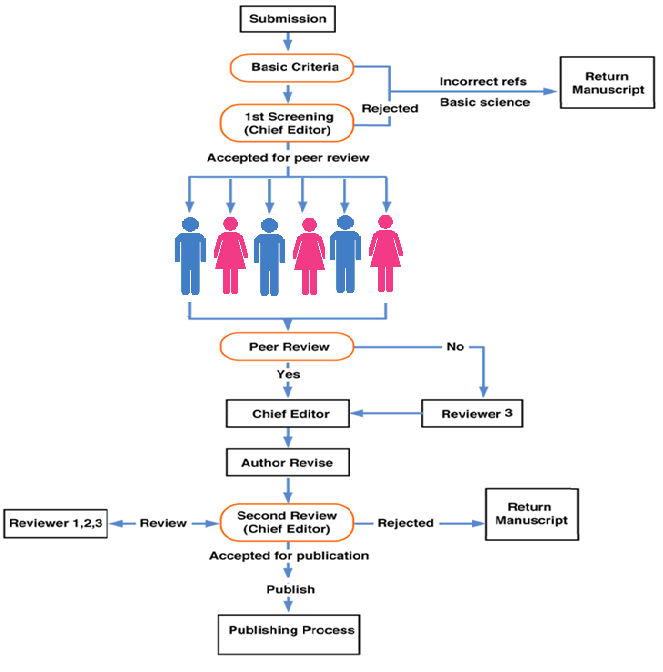Peer Review Process
This peer review process is essentially a quality control mechanism by which experts evaluate manuscripts, and its objective is to ensure a high quality of published science. However, peer reviewers do not make the decision to accept or reject papers. Decision-making authority rests solely with journal editors or the journal’s editorial board, and the editor is considered to be central to the decision-making process.
Initial Screening (1-10) days
All the manuscripts submitted go through the initial checking process. During the initial screening, journal editors mainly check the following:
Does the manuscript fit the Journal’s scope and aim, and will be of interest to the readership?
Does the manuscript fully represents the Applied Issues in Islamic Education (AIIE)?
Is the manuscript of minimum acceptable quality and writing good enough to make it worth reviewing?
Is the manuscript compliant with the AIIE’s instructions for authors?
Peer Review (2-4) months
Once a manuscript clears the above-mentioned initial screening, it is sent for double-blind peer review in which the names of reviewers and authors are not revealed to each other. A minimum of 2 peer reviewers (up to 4) are chosen for the peer review. Peer reviewers are ideally experts in their field.
The peer review is completed once all the reviewers send the journal a detailed report with their comments on the manuscript and their recommendations.
Final Decision
The Editorial board of the journal of Applied Issues in Islamic Education considers the feedback provided by the peer reviewers and arrives at a decision for accepting or rejecting the article. After accepting the article and pre-publishing it, the final edition is done.

The journal of Applied Issues in Islamic Education follows the policies and guidelines of the Committee on Publication Ethics (COPE) and abides by its Code of Conduct in dealing with potential cases of misconduct. |
